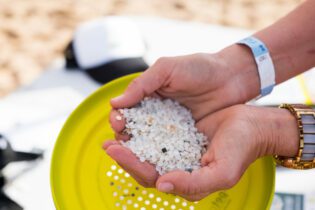Identifying the source of water contamination can be achieved with the help of isotopes, which have proved a valuable technology in various applications over the decades.
At the Network for Industrially Contaminated Land (Nicola) conference in Cape Town in November 2022, a case study was presented on how this method was recently used by a metals processing plant. By Ismail Mahomed, principal hydrogeologist at SRK Consulting. Isotopes are a useful addition to any investigator’s toolbox. A particular environment will acquire a characteristic isotopic composition or signature by virtue of the hydrogeochemical processes involved. We can use this isotope signature for ‘fingerprinting’ – giving us clues to trace the source of water, and hence of the contamination.What are isotopes?
Isotopes are atoms with same atomic number – in other words, the same number of protons in their nuclei. However, they may differ in mass because of variation in the number of neutrons. For example, protium (hydrogen-1) is a stable isotope of hydrogen with one proton and no neutrons – while deuterium (hydrogen-2) has one neutron and tritium (hydrogen-3) has two neutrons.Isotope signatures
Spatial variations in deuterium and Oxygen-18 occur in the hydrological cycle; there is a lower proportion of these isotopes in rain that falls inland than in rain falling at the coast. These are among the variables we can use to identify whether the source of water is from surface dams or from groundwater – as the signature from the rainfall will be retained in groundwater.Evaporation also has an impact on this signature as preferentially lighter isotopes will evaporate from the oceans and surface water. One of the aspects of the case study was considering the evaporation signature of some of the ponds on the client’s site – a signature which was different to the groundwater.
Data analysed during this project suggested that there was some mixing of water from different sources in the underdrain of one of the ponds. This underdrain had a calcium nitrate dominant chemical signature that differed to the other wastewater impoundments, underdrains and groundwater. The isotope results further illustrated the uniqueness of this pond’s underdrain signature.






